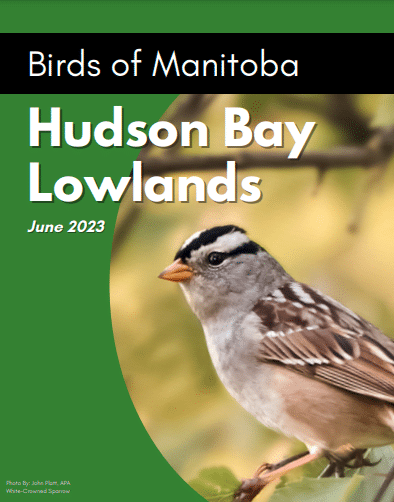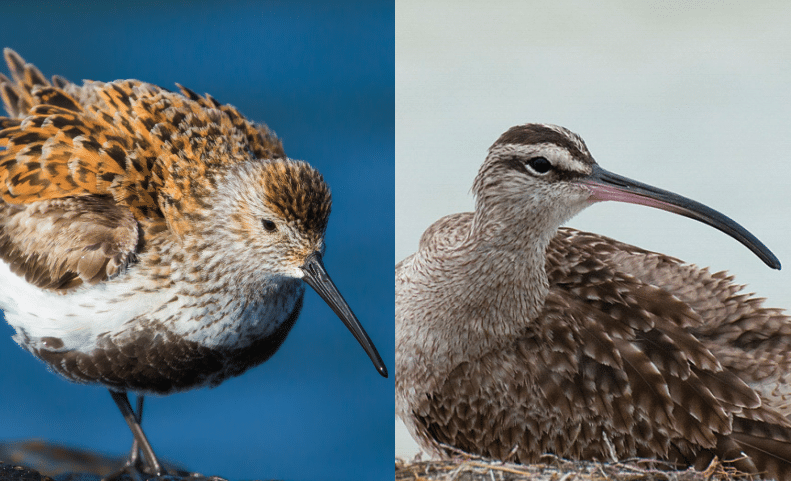
The Birds of Manitoba: Hudson Bay Lowlands report offers a strong case for conservation in the region, which is home to an incredible array of wildlife and enormous stores of carbon within its expansive peatlands.
It was published by the National Audubon Society and the Manitoba Chapter of the Canadian Parks and Wilderness Society in December 2022.
A Mosaic of Habitats for Bird Species
The Hudson Bay Lowlands is a vast, largely unspoiled landscape stretching across 324,000 square kilometres of northern Manitoba, Ontario, and Quebec. It is a globally important source of freshwater and its vast peatlands help to mitigate climate change by absorbing carbon from the atmosphere.
The lowlands boast a diverse range of habitats, from wetlands and waterways to forests and coastal tundra, providing essential breeding and nesting grounds for at least 165 bird species.
“Each spring, millions of migratory birds travel from across the hemisphere to rear their young and take advantage of the lowlands’ abundant resources,” says Jeff Wells, Vice President of Boreal Conservation at the National Audubon Society.
This includes many iconic Canadian bird species, such as the Great Gray Owl, Wilson’s Warbler, and American Pipit.
The coastal tundra wetlands also provide breeding habitat for large numbers of Canada and Snow Geese, Northern Pintail, and Sandhill Crane, and host many seabird and sea duck species, such as Pacific and Red-throated Loons, Arctic Tern, and Parasitic Jaeger, which nest along the coast and forage in nearby marine waters.

The Ecological Significance of the Hudson Bay Lowlands
The Hudson Bay Lowlands form the largest wetland network in North America and the third-largest wetland in the world.
It is also the second-largest continuous expanse of northern peatland on Earth. Peatlands store one-third of global soil carbon—twice as much as the world’s forests—despite covering just 3% of the world’s terrestrial surface.
“Peatlands are the unsung heroes of our planet, quietly safeguarding immense carbon stocks beneath their surface. By safeguarding this ecosystem, we’re working to protect the planet’s carbon reserves and reduce impacts of climate change,” said Ron Thiessen, Executive Director of the Canadian Parks and Wilderness Society’s Manitoba chapter.
This region supports a diverse array of over 800 native plant species and provides critical habitat for a unique group of wildlife found nowhere else in the world.
More than 50 species of freshwater fish can be found within its lakes, rivers, and estuaries, as well as at least 20 mammals, such as caribou, gray wolves, Arctic fox, and Canada lynx roam its landscape.
The coastal environment of the Hudson Bay Lowlands is also crucial for marine mammals, including the southernmost population of polar bears and 28% of the world’s beluga whale population.
Conservation Opportunities
The Hudson Bay Lowlands is a globally important landscape and a hotspot for conservation efforts due to the massive carbon deposits in its peatlands.
However, few policies exist to protect Canada’s peatlands from logging, mineral extraction, or oil and gas development, which would release large amounts of carbon into the atmosphere.
“Conserving the Hudson Bay Lowlands will greatly help in achieving Canada’s conservation goal of protecting 30% of the nation’s lands and waters by 2030.” Thiessen said. “It would help protect the incredible wealth of biodiversity the land sustains and safeguard the region’s peatlands and carbon stores”.

Collaborative Efforts for Conservation
To ensure the long-term preservation of the Hudson Bay Lowlands, it is crucial that Indigenous governments and organisations, regional stakeholders, conservation organisations, crown governments, and rightsholders work collaboratively to achieve protection of this globally significant landscape.
Collaborative efforts should focus on implementing policies that protect peatlands from destructive activities and promote sustainable land use practices, while respecting Indigenous rights, cultures and traditions.
How Can You Help?
The Hudson Bay Lowlands is an ecological treasure that supports a diverse array of important plant, bird, and wildlife species in Manitoba.
Its peatlands play a critical role in mitigating climate change by storing large amounts of carbon. With the increasing threats of climate change and habitat destruction, it is more important than ever to ensure the long-term preservation of this vital ecosystem.
By incorporating the Hudson Bay Lowlands into Canada’s conservation goals and fostering collaboration among crown governments, regional stakeholders, conservation organisations, Indigenous governments and organisations, and rightsholders, we can safeguard the region’s unique habitats, protect its birdlife, and preserve its ecological integrity for future generations to enjoy.
– Thanks in part to the National Audubon Society for making this blog possible. CPAWS greatly appreciates its support of our boreal conservation efforts in Manitoba –
